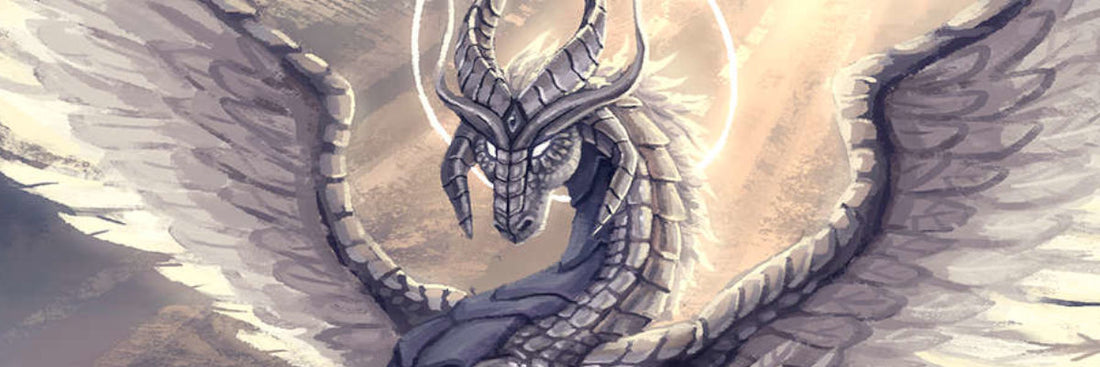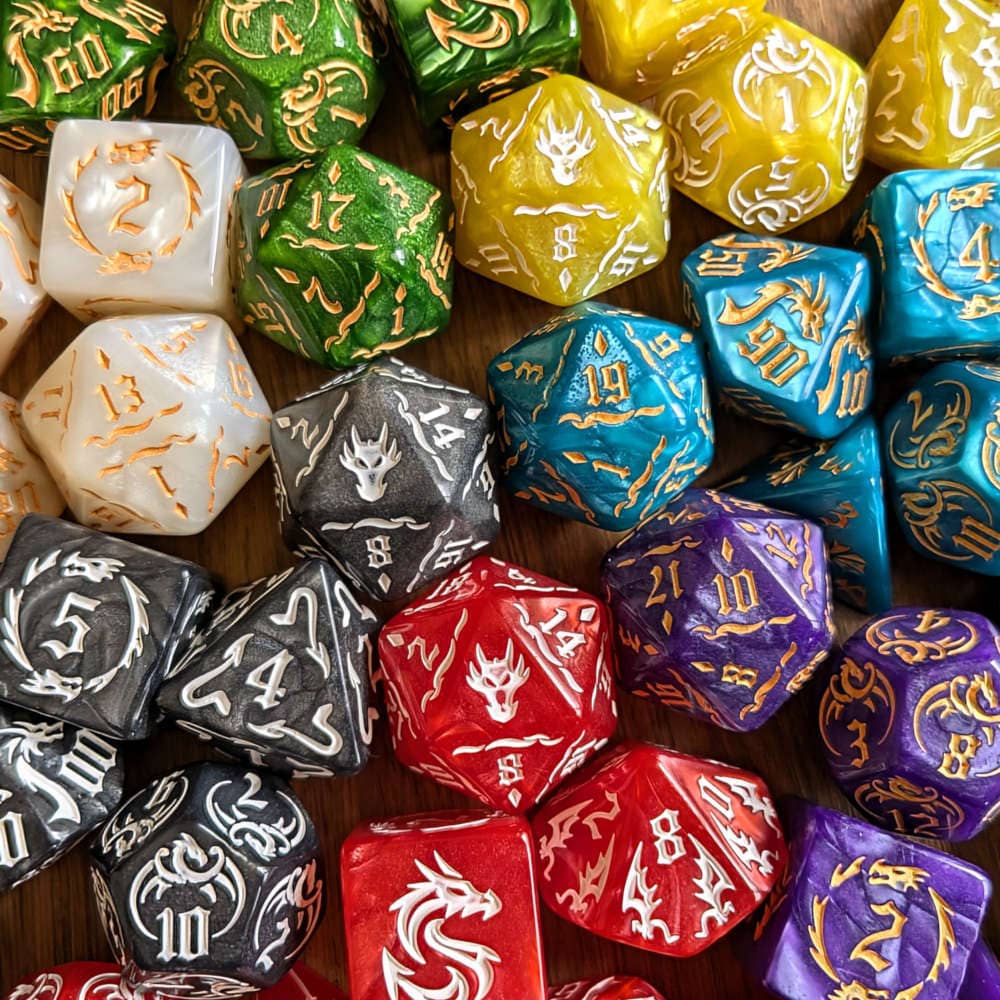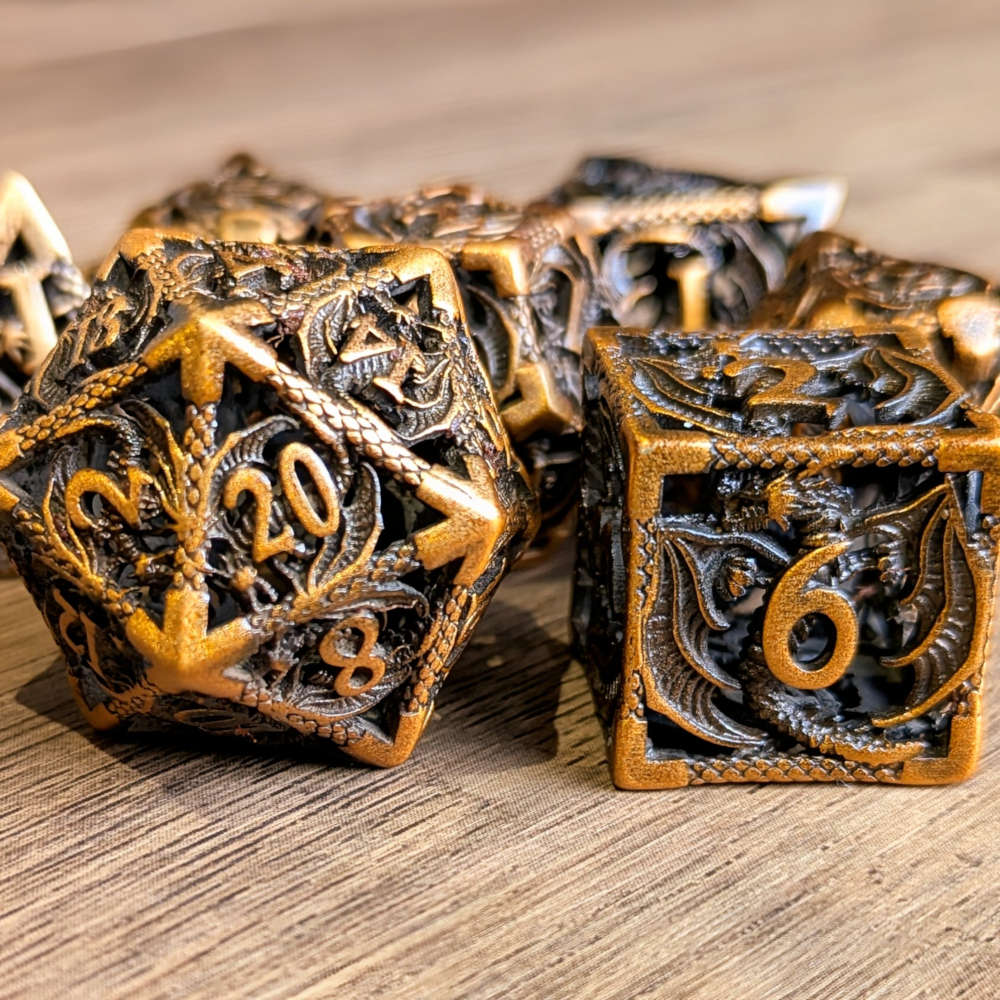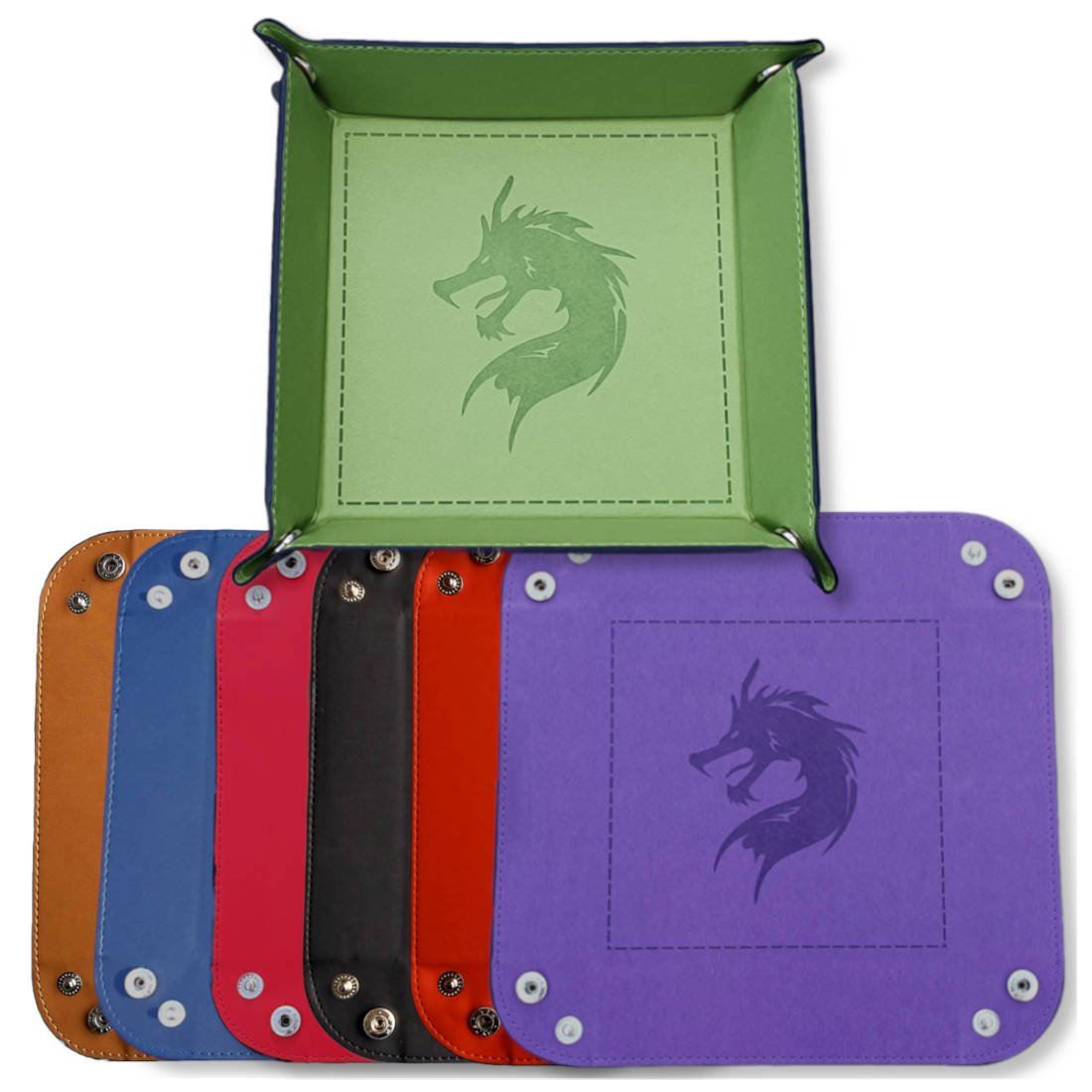Full guide to Bahamut

In Dungeons & Dragons, Bahamut is a symbol of justice, wisdom, and protection. Known as the Platinum Dragon, he is one of the most revered deities in the game’s lore, representing the pinnacle of good among dragonkind.
In this guide, we’ll explore who Bahamut is in D&D, dive into his 5e stat block, and share ideas on how Dungeon Masters and players alike can weave Bahamut into their campaigns. We’ll also introduce you to some Bahamut-themed dice and accessories to help you bring a touch of the Platinum Dragon's majesty to your tabletop adventures.
Who is Bahamut?
Bahamut is known as the Platinum Dragon and stands as one of the most powerful and respected figures in Dungeons & Dragons lore. He is a god of justice, protection, nobility, and honour, revered by good-aligned dragons, paladins, and clerics across many campaign worlds.
Bahamut represents the ideals of righteousness and mercy, always striving to oppose tyranny, evil, and corruption - especially that of his eternal rival, Tiamat, the five-headed dragon goddess of evil.
Bahamut is often seen as a symbol of hope and guidance. While he is a deity, he is known for directly intervening in mortal affairs more often than many other gods, sending visions, avatars, or even appearing in disguise to aid those in need.
What does Bahamut look like?
Bahamut is most often depicted as a massive, majestic dragon with shimmering platinum scales, radiant eyes, and an aura of divine splendour. His presence is often described as blindingly beautiful and overwhelmingly powerful. He is said to have seven ancient gold dragon companions who accompany him, further symbolising his divine authority and might.

Above: a stunning interpretation of Bahamut, created by Sleepy Otter.
When he wishes to walk among mortals without drawing attention, Bahamut sometimes takes on the form of an old man in simple robes, accompanied by a small group of animals - a disguise that hides his true majesty while allowing him to observe and assist those who live by his ideals.
How do you pronounce Bahamut?
Bahamut is commonly pronounced “BAH-ha-moot” or “BAH-ha-mut”. In most D&D media and tables, the first syllable is stressed, with a softer "mut" at the end.
Bahamut in D&D
Bahamut has been a major figure in Dungeons & Dragons lore since the earliest editions of the game. Originally appearing in the first edition's Monster Manual, Bahamut was quickly established as the king of all good dragons and a divine force for law and goodness. Across various settings like Forgotten Realms and Greyhawk, Bahamut’s story has been expanded and deepened.
Bahamut in D&D 5e
In D&D 5e, Bahamut remains an influential deity. While he does not typically intervene directly as a combatant, his influence is strongly felt through his followers, blessings, and sacred relics. Dungeon Masters can use Bahamut as a patron for noble quests, as a guiding figure for paladins and clerics, or even as a force players might encounter in their journeys - either through dreams, visions, or rare divine meetings.
If you're thinking of bringing Bahamut into your D&D adventures and want something physical to enhance the experience, take a look at our Bahamut-themed metal dice - stunning dice coloured in honour of the mighty Platinum Dragon.
Bahamut stat block for D&D 5e
In Dungeons & Dragons 5e, it’s unlikely that Bahamut himself would ever need a full stat block - he is a god of immense, almost unimaginable power. Facing Bahamut directly would be far beyond the scope of most campaigns.
However, for those who wish to bring a part of his divine might into their games, Fizban’s Treasury of Dragons provides a stat block for the Aspect of Bahamut.

This Aspect represents a fraction of Bahamut’s true power, allowing Dungeon Masters to introduce his presence in a way that is still awe-inspiring but manageable within the rules of a high-level campaign.
How DMs can use Bahamut in their campaigns
Looking to use Bahamut in your D&D campaign? Here are a few ideas for how Dungeon Masters can introduce Bahamut:
- A holy prophecy: One of the characters could receive a divine prophecy from Bahamut, foretelling a looming catastrophe unless they can prevent it. This can set up an epic questline full of moral dilemmas and heroism.
- A vision in their dreams: Dreams are a brilliant way to deliver information without breaking the flow of the game. Bahamut might send cryptic visions showing glimpses of past wrongs, future dangers, or hidden truths that could guide the party's next steps.
- A chance meeting: An audience with Bahamut, even in disguise, would be an unforgettable moment. Whether he offers ancient wisdom, sets a great challenge, or answers a vital question, such an encounter can become a campaign highlight.
- An unexpected ally: Though players can't have a dragon as a pet in D&D, Bahamut could send celestial allies, offer magical boons, or even intervene directly in moments of great need - shifting the tide when all seems lost.
- A sacred quest: Bahamut could task the party with recovering a stolen relic, defending a city under siege, or redeeming a fallen soul - missions perfectly suited to his ideals of justice, honour, and protection.
- A test of character: Rather than a straightforward quest, Bahamut might test the party’s virtue. Will they choose mercy over revenge? Honour over wealth? These moral trials could shape the campaign’s direction.
- An ancient temple or shrine: The players could discover a hidden temple dedicated to Bahamut, filled with puzzles, artefacts, and ancient lore - or perhaps a sanctuary where they must prove themselves worthy to receive his blessing.
How to play a follower of Bahamut
Playing a follower of Bahamut, or a character who has some connection to the Platinum Dragon, can be a brilliant way to make a unique D&D character. Here are a few ideas to spark your imagination:
- A paladin of justice and honour: A classic choice! Your character could be a paladin sworn to uphold Bahamut’s ideals of justice, mercy, and protection, travelling the world to right wrongs and inspire hope.
- A drakewarden ranger blessed by Bahamut: Perhaps your character’s drake companion was gifted as a blessing from Bahamut himself, or hatched from an egg entrusted to your care by a devout paladin. This bond could hint at a greater destiny to become a true champion of Bahamut. Read more in our dedicated guide to drakewarden rangers in D&D.
- A seeker of divine power: Although you can't play a dragon in D&D, your character could be on a quest to forge a deep connection with Bahamut - striving to understand his teachings and one day wield even a sliver of his immense power to spread good in the world.
- A survivor seeking justice: Maybe your character’s family or village was destroyed by the forces of Tiamat. In their darkest hour, they prayed to Bahamut - and received a vision or prophecy that set them on a path of righteous vengeance, justice, or redemption.
- A scholar of draconic lore: Your character might be a wizard or bard obsessed with dragon myths, with Bahamut being the central figure in their studies. Their devotion could lead to uncovering ancient relics, forgotten temples, or secrets lost to time.
- An oathbreaker redeemed: Perhaps your character once walked a darker path, but after a pivotal moment of clarity, sought forgiveness through Bahamut’s teachings. Their story could be one of redemption, fighting not only external battles but their own inner demons.
Channel Bahamut’s spirit at your table
If you enjoyed learning about Bahamut, don’t miss our guide to the metallic dragons, where we dive deeper into his draconic kin. Or, for something a little different, you might enjoy our exploration of Tiamat vs Bahamut around the world, where we uncover search trends to see which countries favour which legendary dragon deity.
If you’re feeling inspired to channel Bahamut’s spirit in your own games, we have a stunning range of metal D&D dice ready to guide your quests. And if you already have your trusty dice by your side, make sure your campaign notes are kept safe with our platinum dragon notebook, the perfect companion for any Bahamut follower.
FAQs about Bahamut
What is the relationship between Bahamut and Tiamat?
Bahamut and Tiamat are ancient rivals. Bahamut stands for justice and protection, while Tiamat embodies greed, destruction, and tyranny. Their conflict often shapes major dragon-related storylines in D&D.
Can players meet Bahamut in a D&D campaign?
Yes! In some campaigns, players might meet Bahamut through visions, dreams, holy quests, or direct appearances - usually at pivotal moments in the story.
How can DMs use Bahamut in their adventures?
DMs can weave Bahamut into campaigns through sacred quests, protecting temples, retrieving artifacts, battling Tiamat's forces, or receiving divine blessings.
Is Bahamut ever an enemy in D&D?
Rarely, but it’s possible in very unique campaign settings (such as twisted realities or campaigns where gods themselves fall from grace). Normally, Bahamut is an ally and protector, not an antagonist.





